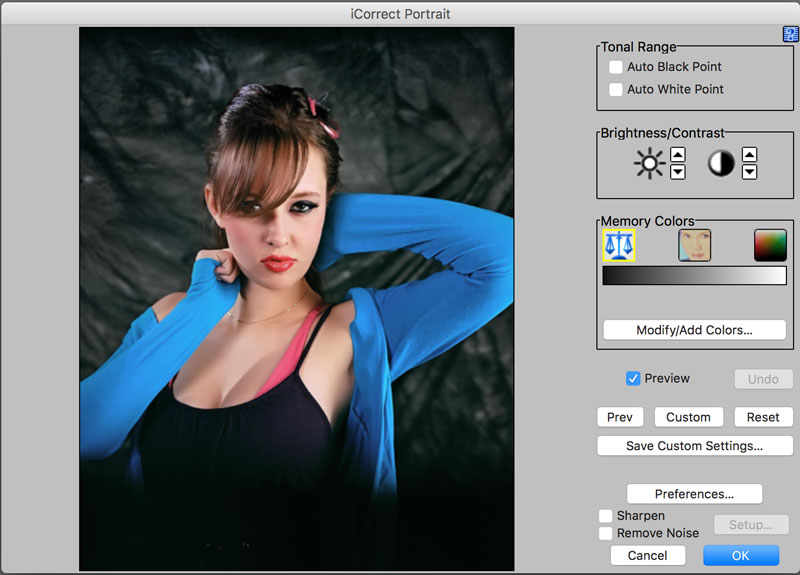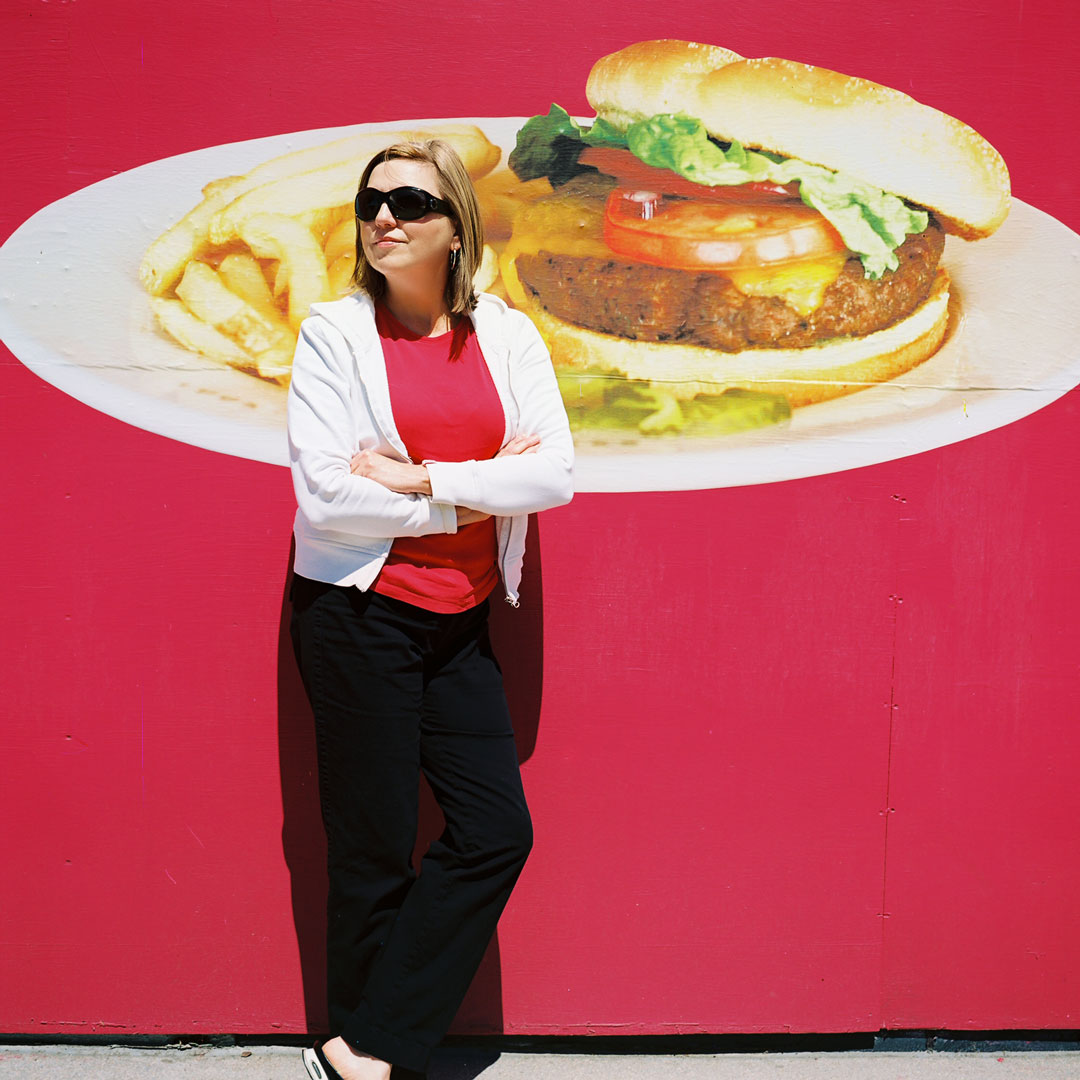Today’s Post by Joe Farace
Man who invented the hamburger was smart; man who invented the cheeseburger was a genius. —Matthew McConaughey
 I think that Kodak’s Ektar 100 film is an ideal film for photographing all kinds of subject matter from nature, travel, fashion and architecture when you want to put the emphasis on detail and color.
I think that Kodak’s Ektar 100 film is an ideal film for photographing all kinds of subject matter from nature, travel, fashion and architecture when you want to put the emphasis on detail and color.
Kodak suggests that professional photographers will “prefer Kodak Professional Portra films for their natural reproduction of the full range of skin tones” but I found that skin tones captured in the studio with Ektar 100, while a bit vivid were but easily corrected into something more natural and neutral using PictoColor’s iCorrect Portrait (at right.) On the other hand all of the portraits I made outdoors using Ektar 100 exhibited natural looking skin tones.
Shooting Kodak Ektar 100 in 120
Ektar 100 is a standard C-41 color negative film, so processing was no big deal as long as your lab, like The Darkroom, can handle 120 film. It’s also available in 35mm format as well. I scanned the processed 120 format Ektar 100 film with an old Canon flatbed scanner but the film retained a slight curl that was produced during processing, probably during the drying cycle and Canon’s film holder refused to hold the film strip flat when it was inserted in the proper direction. Even though this is an inexpensive scanner, it produced acceptable results partially because of the large size of the medium format negative and the results would have been better if I used a higher quality scanner (which is on my 2025 wish list.)
 How I Made this Photo: This is my second favorite portrait of Mary; Here’s my favorite. I photographed her on a bright sunny Colorado day, next to this big hamburger print using a Seagull 4A-107 TLR that she gave me for my birthday. The film used was Kodak Ektar 100 in 120 format, exposure was unrecorded.
How I Made this Photo: This is my second favorite portrait of Mary; Here’s my favorite. I photographed her on a bright sunny Colorado day, next to this big hamburger print using a Seagull 4A-107 TLR that she gave me for my birthday. The film used was Kodak Ektar 100 in 120 format, exposure was unrecorded.
The reciprocity law states that a film’s response is determined by the total exposure, defined as intensity multiplied by time. Therefore, the same response can result from reducing duration and increasing light intensity, and vice versa. Reciprocity may be unknown in the digital world but it’s a fact of life for film shooters, yet Kodak recommends no adjustments for long and short exposures or even any filter corrections or exposure compensation for exposures from 1⁄10,000 sec to one second but…
…for critical applications with longer exposure times, Kodak hedges their bets and suggests that you “make tests under your conditions.” I made my own tests under low light conditions and found that with exposures up to five seconds with Ektar 100 I didn’t experience problems with either color shifts or exposure variance and the over or underexposed grain structure remained fine, tight and controlled.
There’s no doubt that Kodak Ektar 100 in 120 format will be a top choice for fine art photographers who are shooting film. Its super color saturation and microscopic grain make for a formidable combination.
